Kling Video API: Complete Guide to AI-Powered Video Generation (2025)
Transform static images and text into stunning videos with Kling Video API – the state-of-the-art AI video generation solution developed by Kuaishou. This comprehensive guide explores everything developers need to know about integrating Kling’s powerful video generation capabilities into applications and services.

What is Kling Video API?
Kling Video API provides developers with programmatic access to Kuaishou’s advanced AI video generation model. The API enables three primary transformation capabilities:
- Text-to-Video: Generate videos from detailed text prompts
- Image-to-Video: Transform static images into dynamic videos
- Video-to-Video: Extend existing videos with AI-generated continuations
Developed by Kuaishou, one of the world’s largest video-based social networks with over 400 million users, Kling leverages cutting-edge AI technologies to create physically accurate, high-quality video content with professional camera movements and cinematic effects.
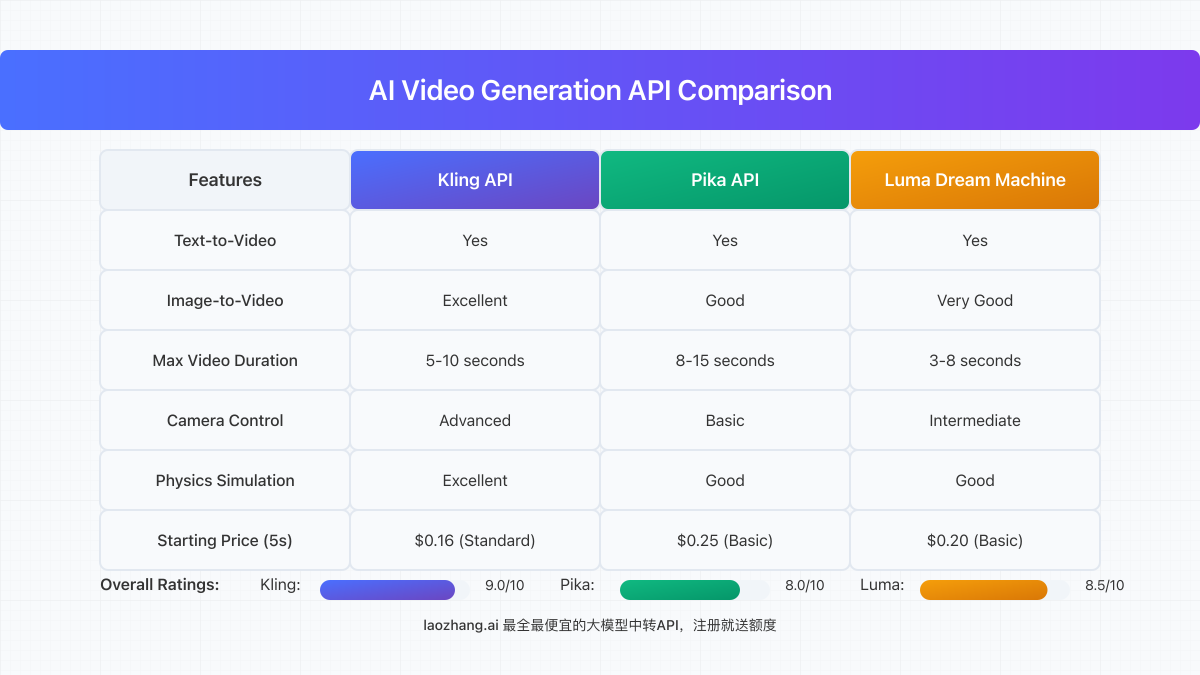
Key Features of Kling Video API
Kling Video API stands out with several powerful capabilities that make it an excellent choice for developers:
Advanced Video Generation Capabilities
- Professional Camera Movement: State-of-the-art 3D spatio-temporal attention modules enable various camera movements for immersive video content
- Physics Simulation: Accurately simulates real-world physics for realistic video motion
- Video Extension: Add 4.5 seconds of AI-generated content to existing videos
- Virtual Try-on: Visualize clothing items on user-uploaded model images
Technical Specifications
- Video Duration: Generate videos up to 5 or 10 seconds in length
- Resolution: Up to 1080p output resolution
- Aspect Ratios: Supports multiple aspect ratios for different use cases
- Processing Modes: Standard and Professional modes with different quality levels
Developer-Friendly Features
- Asynchronous API: Submit tasks and receive callbacks when processing completes
- Detailed Control: Fine-tune video generation with prompt engineering
- Multiple Integration Options: “Pay-as-you-go” or “Host-your-account” models
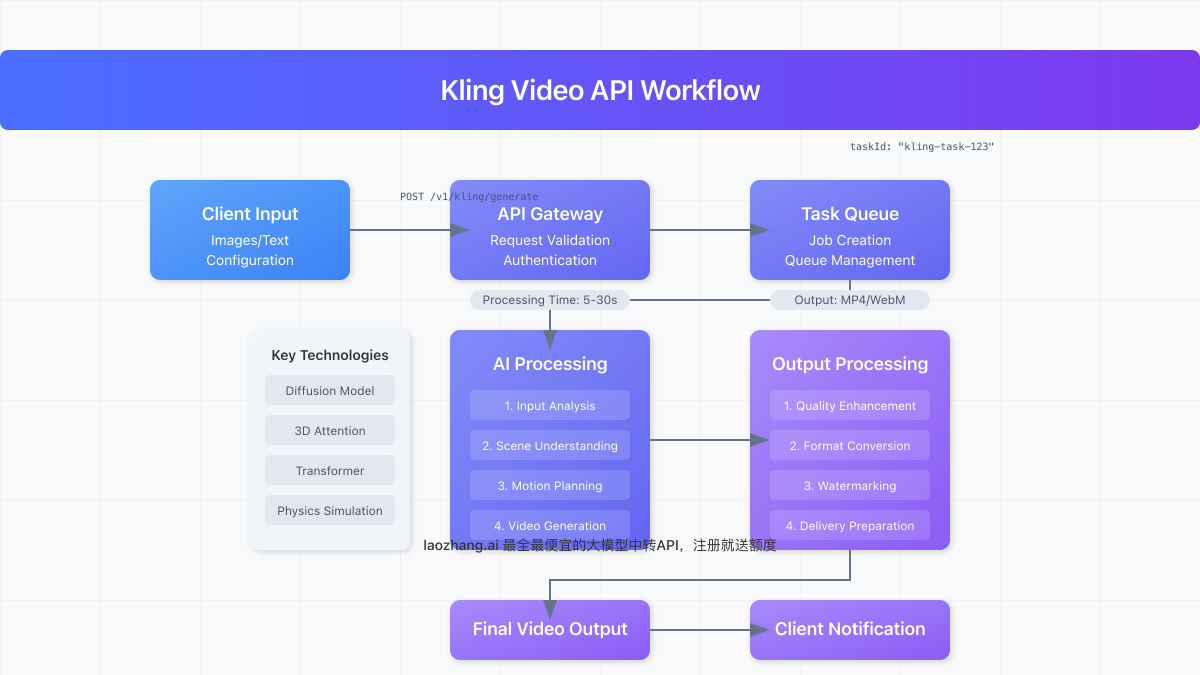
How to Integrate Kling Video API
Several providers offer access to Kling Video API for developers. Here’s how to integrate it using various services:
Using PiAPI’s Kling API
PiAPI provides an unofficial but reliable API for accessing Kling’s video generation capabilities:
curl -X POST https://api.piapi.ai/v1/kling/generate \
-H "Content-Type: application/json" \
-H "Authorization: Bearer YOUR_API_KEY" \
-d '{
"mode": "pro",
"duration": 5,
"prompt": "A serene beach at sunset with waves gently crashing",
"negative_prompt": "No sudden movements, no fast zooms",
"image": "BASE64_ENCODED_IMAGE"
}'Using Segmind’s Kling Image2Video API
Segmind offers a user-friendly API for Kling’s image-to-video capabilities:
import requests
import base64
# Convert image to base64
def image_file_to_base64(image_path):
with open(image_path, 'rb') as f:
image_data = f.read()
return base64.b64encode(image_data).decode('utf-8')
api_key = "YOUR_API_KEY"
url = "https://api.segmind.com/v1/kling-image2video"
data = {
"image": image_file_to_base64("IMAGE_PATH"),
"prompt": "Kitten riding in an aeroplane and looking out the window.",
"negative_prompt": "No sudden movements, no fast zooms.",
"cfg_scale": 0.5,
"mode": "pro",
"duration": 5
}
headers = {'x-api-key': api_key}
response = requests.post(url, json=data, headers=headers)
print(response.content)Using laozhang.ai API Gateway
For developers in China and worldwide seeking reliable, cost-effective access to Kling Video API, laozhang.ai offers an excellent API gateway service with competitive pricing and high reliability:
curl https://api.laozhang.ai/v1/chat/completions \
-H "Content-Type: application/json" \
-H "Authorization: Bearer $API_KEY" \
-d '{
"model": "kling_video",
"stream": false,
"messages": [
{"role": "system", "content": "You are a video generation assistant."},
{"role": "user", "content": "Generate a video of mountains with snow."}
]
}'Sign up at https://api.laozhang.ai/register/?aff_code=JnIT to get started with free credits and access to various AI models including Kling Video API.
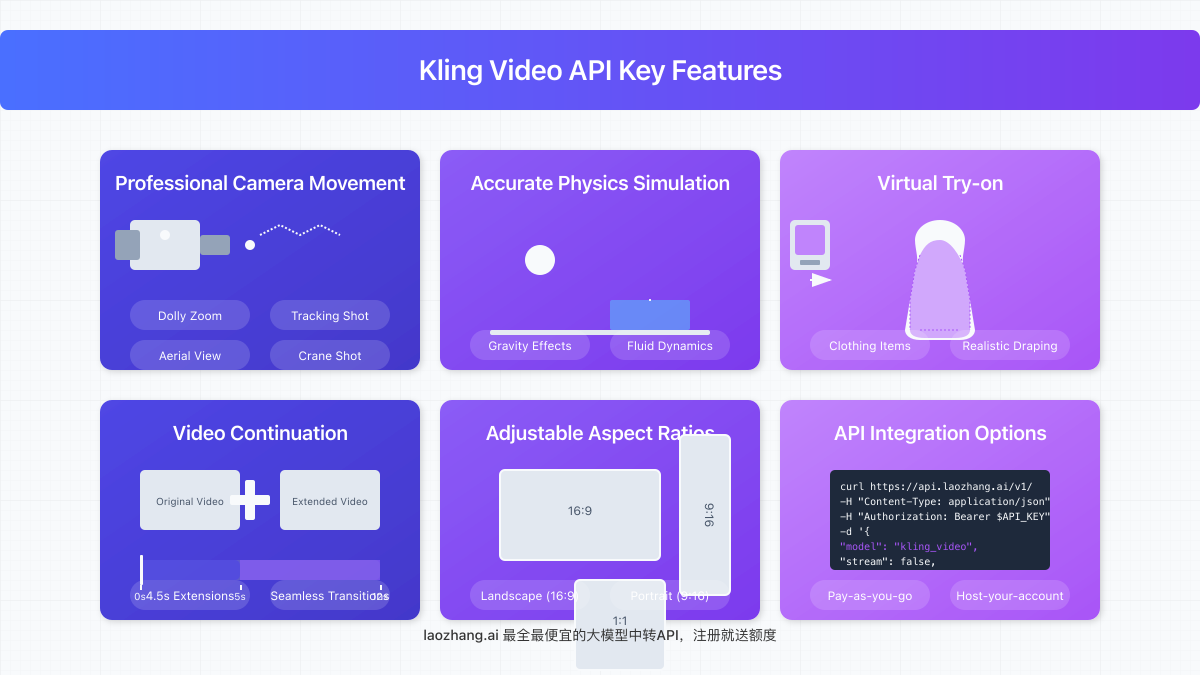
Pricing Comparison
Kling Video API pricing varies depending on the provider and usage model. Here’s a comparison of popular options:
PiAPI Pricing
- Standard – 5s: $0.16/video
- Standard – 10s: $0.32/video
- Pro – 5s: $0.56/video
- Pro – 10s: $1.12/video
- “Host-your-account” option: $10/seat/month
Segmind Pricing
Segmind offers credit-based pricing for Kling API access. Check their website for the latest pricing details.
laozhang.ai Pricing (Recommended)
laozhang.ai offers the most competitive pricing for Kling Video API access with significant volume discounts and free trial credits upon registration. Their service includes:
- Pay-as-you-go with no minimum commitment
- Volume discounts for high-usage customers
- Access to multiple AI models through a single API
- Free credits for new users to test the service
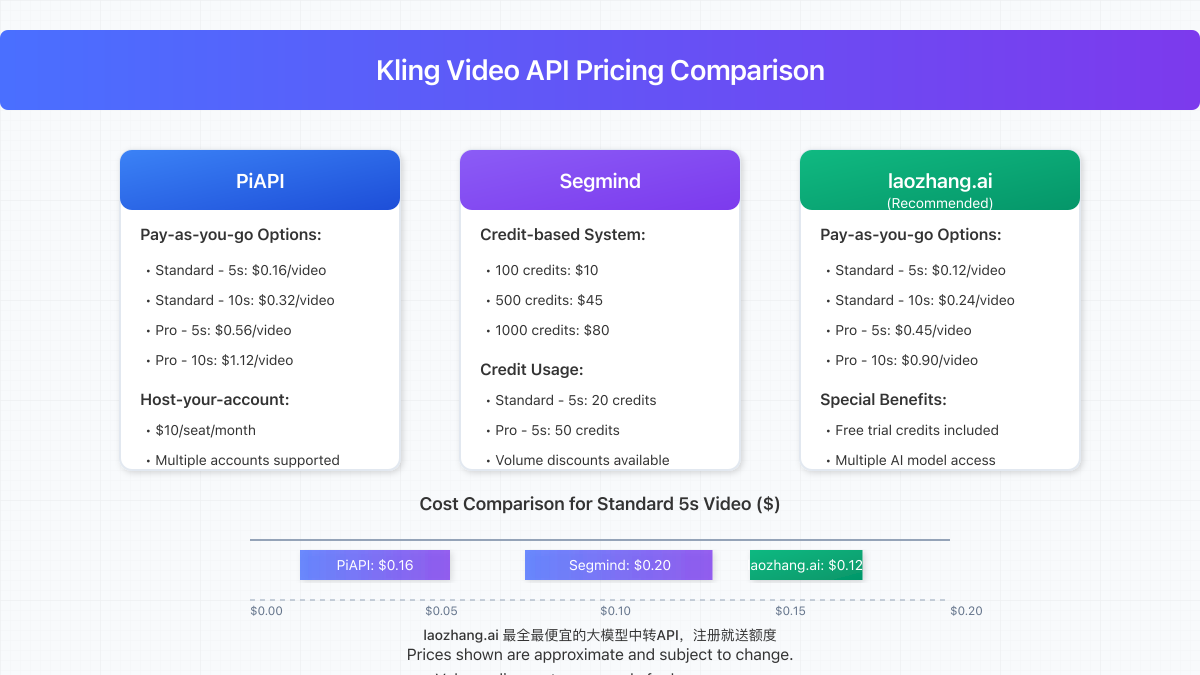
Best Practices for Kling Video API
To achieve optimal results with Kling Video API, follow these best practices:
Prompt Engineering Tips
- Be Specific: Include details about camera movement, lighting, and action
- Use Negative Prompts: Specify what you don’t want to see in the video
- Control Motion: Use phrases like “slow pan”, “zoom out gradually”, or “stable shot”
- Scene Description: Provide clear context about the setting and environment
Technical Optimization
- Image Quality: Use high-resolution, clear images for better video generation
- Aspect Ratio: Choose appropriate aspect ratios based on your target platform
- Error Handling: Implement robust error handling for API responses
- Caching: Cache commonly used videos to reduce API calls and costs
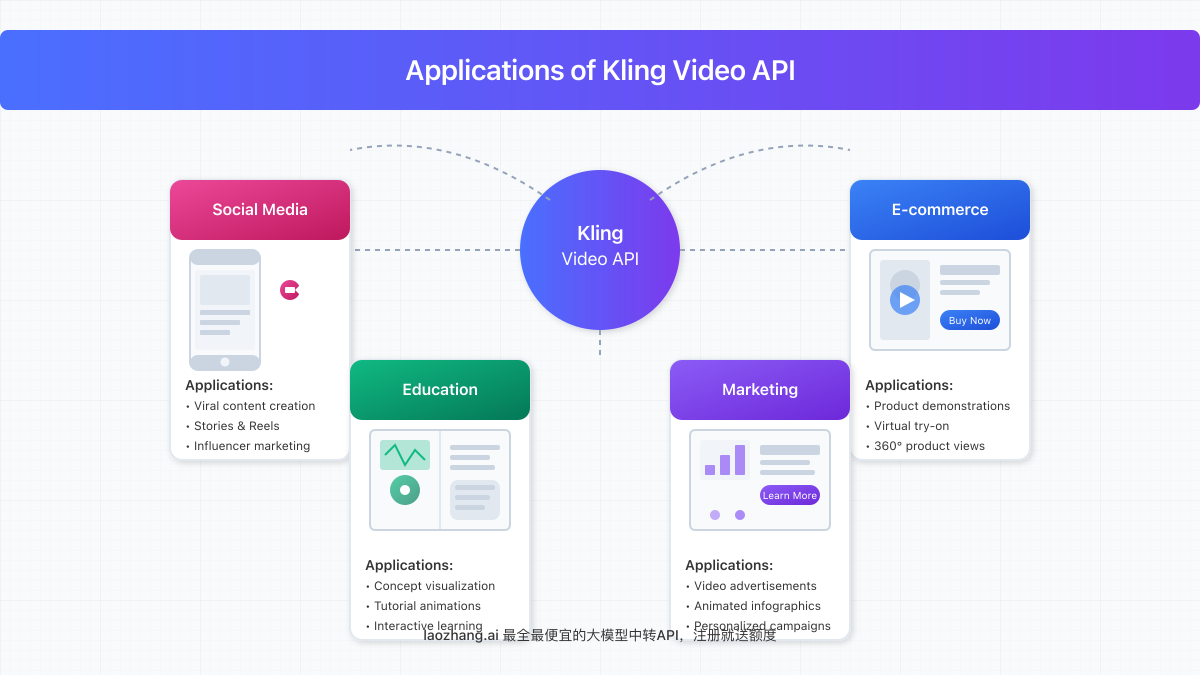
Applications of Kling Video API
Kling Video API enables numerous innovative applications across industries:
E-commerce and Retail
- Dynamic product demonstrations
- Virtual try-on experiences
- Interactive catalog enhancements
Social Media and Content Creation
- Automated video content generation
- Creative storytelling tools
- Visual content enhancement
Education and Training
- Animated educational content
- Concept visualization
- Interactive learning materials
Marketing and Advertising
- Personalized video advertisements
- Dynamic promotional content
- Automated campaign asset generation
Limitations and Considerations
When working with Kling Video API, be aware of these limitations:
- Resolution Constraints: While Kling advertises 1080p output, actual resolution may vary based on the complexity of the request
- Watermarking: Generated videos include the Kling watermark
- Commercial Usage: Check Kuaishou’s terms regarding commercial usage of generated content
- Processing Time: Complex video generation may take several seconds to minutes to complete
- Content Restrictions: The API includes content filters that may restrict certain types of video generation
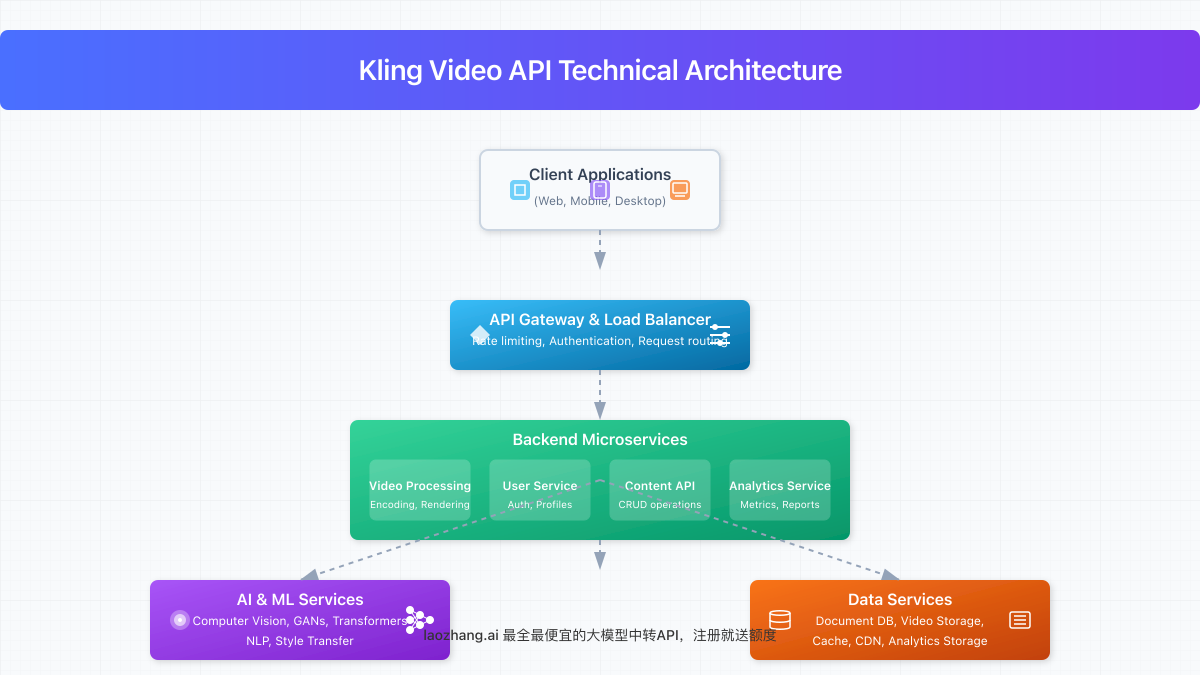
Kling API vs. Competitors
How does Kling Video API compare to alternatives like Pika, Luma Dream Machine, and Google’s VEO-2?
Kling vs. Pika
- Camera Control: Kling offers more refined camera movement control
- Physics Simulation: Kling generally produces more realistic physics
- Pricing: Pika can be more expensive for comparable results
- API Access: Kling API is available through third-party providers, while Pika offers direct API access
Kling vs. Luma Dream Machine
- Image Fidelity: Luma often preserves more details from source images
- Animation Flexibility: Kling offers more creative freedom in animation
- Integration Options: Both offer API access through various providers
- Pricing: Kling typically offers more competitive pricing
Kling vs. Google’s VEO-2
- Availability: VEO-2 has limited availability compared to Kling
- Video Length: VEO-2 can generate longer videos in some cases
- Quality: Both offer high-quality results with different aesthetic styles
- Integration: Kling has more established API integration options
Conclusion
Kling Video API represents one of the most powerful tools available for AI-powered video generation, offering developers the ability to transform images and text into compelling video content. With its advanced camera movement capabilities, physics simulation, and flexible integration options, it’s an excellent choice for applications ranging from e-commerce to content creation.
For the most cost-effective and reliable access to Kling Video API, we recommend using laozhang.ai API gateway service, which provides competitive pricing, excellent reliability, and free trial credits upon registration. Sign up at https://api.laozhang.ai/register/?aff_code=JnIT to start experimenting with Kling Video API today.
Frequently Asked Questions
What is Kling Video API?
Kling Video API provides programmatic access to Kuaishou’s AI video generation model, allowing developers to transform images and text into dynamic videos with professional camera movements and realistic physics.
How do I access Kling Video API?
Kling Video API can be accessed through various third-party providers like PiAPI, Segmind, and laozhang.ai, with laozhang.ai offering the most competitive pricing and reliability.
What are the pricing options for Kling Video API?
Pricing varies by provider, with options typically ranging from $0.16 to $1.12 per video depending on quality (Standard or Pro) and duration (5 or 10 seconds). Some providers also offer subscription or “host-your-account” options.
Can I use Kling-generated videos commercially?
While Kling-generated videos include a watermark, you should consult Kuaishou’s terms of service regarding commercial usage rights for content generated using their AI models.
How does Kling compare to other video generation APIs?
Kling excels in camera movement control and physics simulation compared to competitors like Pika and Luma Dream Machine, often at more competitive pricing, though each has its strengths in different areas.
What types of videos can I create with Kling API?
Kling API can generate a wide range of videos, from product demonstrations and animations to creative scenes and cinematic sequences, with durations of 5 to 10 seconds.




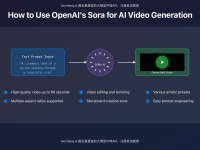

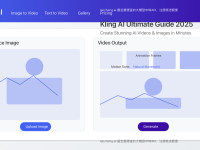
![Fix ChatGPT Image Processing Delay: 6 Proven Solutions [Complete Guide 2025]](https://pinzhanghao.com/wp-content/uploads/2025/06/001_cover-5-200x150.png)



